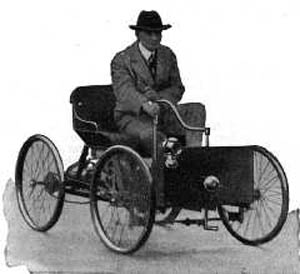| Huxley's
utopia removed God and religion, claiming that
both interfere with happiness of man. In its place, Huxley set Henry
Ford, the father of the American automobile industry, mass production,
and mass consumption. Ford greatly shocked his critics, and the public at
large, when he raised the minimum wage of his workers to $5 a day for a 9
hour work week (at a time when the going wage in the auto industry was
$2.34), and later to the outrageous rate of $10 a day. Ford's reasons were
many. He was the son of farmers, and believed that the rich shouldn't be
the only people to buy cars, but that his factory workers, too, should be
able to buy and drive the cars they built.
As a result of
higher wages, Ford essentially laid foundation for America's middle class.
With increased free time and more money, more people bought cars and
moved into the expanding cities.
Ford's
introduction and use of the assembly line greatly enhanced America's
Industrial Revolution. By 1914, his factories were able to produce 1 car
every 93 minutes. By the time production of the Model T, his first car
type, ceased in 1927, more than 15 million cars had been produced (half
the world's automotive output). |

Henry Ford on his Quadricycle (his
first car)
|